Redazione
International Community
![]()
Generalate House 2017/2018
From the ASC Constitution(L.C.#6)
“Made one in him by Baptism and Eucharist, and by our religious consecration and charism, we are called to grow together toward unity in life and love, as Father, Son and Spirit are one. As the quality of our presence to one another becomes more loving, our community life itself will be a prophetic sign of what the whole Church is called to become: a communion of love in which people of every tribe and tongue and nation are united”. (Rev. 5: 9,10)
The community of the general house is an international reality that aims to become an intercultural community in response to the signs of the times and the call of the Universal Church.
It is made up of 19 sisters of 8 nationalities from the five continents: Europe, Asia, the Americas, Africa, and five different religious congregations: Adorers of the Blood of Christ, from the Franciscan Immacolatine Sisters , Oblate Catechists Little Servants of the Poor, Franciscan Clarist Congregation , Sisters of Charity.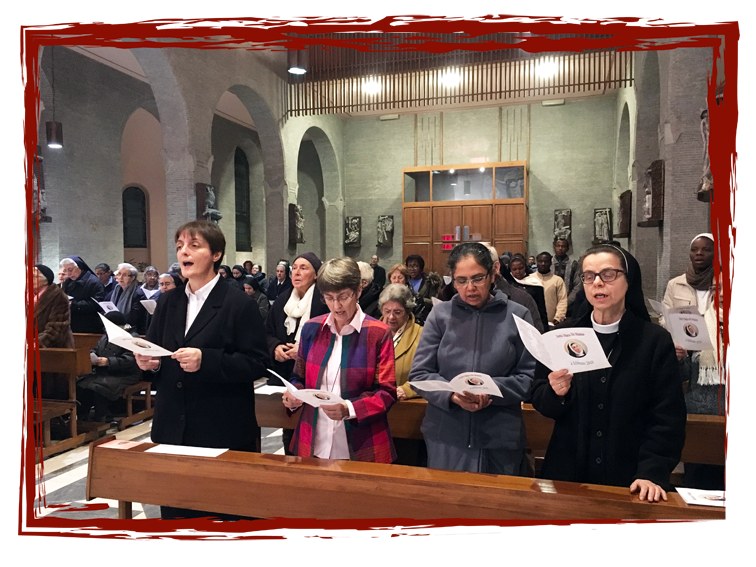
April 21 2018 Activity
Intercultural living is no longer an experience that is “good to have” but today, it has become a necessity.
Living in a truly intercultural environment means having discomfort with us as a constant companion. It is a part of the process of transformation that we are going through as we are internalizing a new perspective on the world, rethinking our existing beliefs, integrating old and new beliefs, and ultimately forming a new worldview.
Yes transformation begins with small steps that leaves behind long-term influences.
Sr. Bridget Pulickakunnel, ASC
General Administration
![]()
ASC CONSTITUTION
General Administration
Overall leadership of our congregation is entrusted to the general superior assisted by four general councilors. They are elected by the general assembly for a term of six years.
The superior and council are assisted by a general secretary and treasurer, selected by the assembly from nominations made by the general superior with the consent of the council. These seven sisters form the general administration of our congregation.
As a group, they are to witness to loving community, to collaboration in ministry and to unity within the diversity of our international congregation. (Statutes n. 63)
The general superior has the highest authority within our congregation in order to promote the vitality of apostolic life of all provinces, local communities and sisters. With prophetic vision she guides our congregation toward the future and serves as our center of unity. She is president of the general council, of the general assembly and of the inter-assembly congress. She serves as official liaison with the Apostolic See and represents our congregation to Church and civic communities, and in international organizations, especially those for religious women. (Statutes n. 64)

Sr. Maria Hughes, ASC

Sr. Maria Hughes, General Superior - Sr. Patrizia Pasquini, Counsilor
Sr. Barbara Perali, Secretary - Sr. Danijela Anić, Counsilor - Sr. Florida Malenda, Counsilor
Missions
![]()

Albania Mission
Motrat Adhurueset e Gjakut të Krishtit
Shtepia e Murges L. 18 Blloku i Ri
Durazzo (Albania)
Australia Mission
107 Brisbane Rd., St. John’s Park
Sydney 2176, NSW (Australia)
Russia Mission
Krasnoyarsk Krai
662153 Achinsk
Stroiteli Str.31 (Russia)
Belarus Mission
Vitebsk Oblast
211720 Dokshicy
Puskin Str. 44 (Belarus)
Mozambique Mission
ASC – Mafuiane
P.O. Box 16, Maputo
Correios De Boane – Mafuiane (Mozambique)
Mission of Peru
Comunidad “Maria De Mattias”
Pasaje e Manuel Salcedo 233
Mz E Lt 23 Retablo, Comas
Lima (Peru)
Missione Guatemala
ASC
APDO 2483
Guatemala City
Guatemala
Vietnam
Ho Chi Minh City
Foundations
![]()
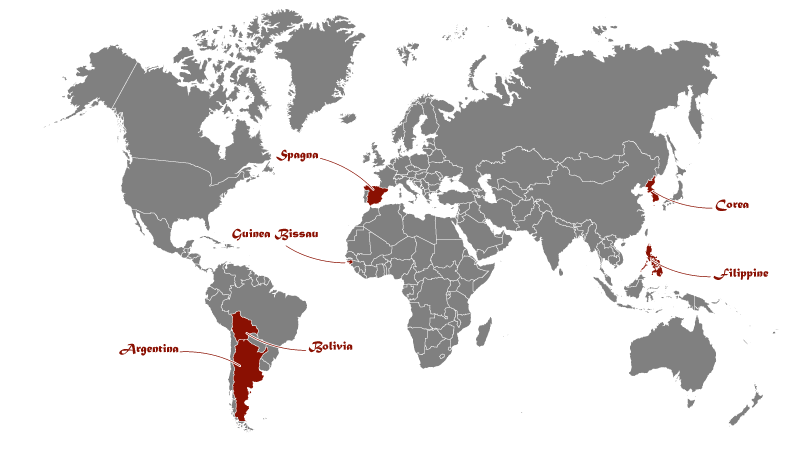
Argentina Foundation
Brigadier Juan Manuel De Rosas, 2354
1655 Josè Leon Suarez – Buenos Aires (Argentina)
Philippines Foundation
14, Pilar Hidalgo Lim – Tierra Verde II
1107 Tandang Sora – Quezon City (Philippines)
Guinea Bissau Foundation
BISSAU - Centro Feminino Maria De Mattias e Postulato – C.P. 20
(Guinea Bissau)
Korean Foundation
Gyeongsangnam-Do Changwon-Si
Masanhappo-Gu, Gusan-Myeon, Oggye-Ro 11
Seoul 631-842 (KOREA)
Bolivia Foundation
Hogar Moises Navajas
Casilla 1056
Tarija BOLIVIA
Spain Foundation
Suarez y Garcìa, 19
28022 Madrid (Spain)
The Foundress
Name: Maria Matilde
Surname: De Mattias
Born: February 4, 1805 in Vallecorsa
Nationality: The whole world
Residence: Ciociaria and surrounding area
Marital status: Obedient Rebel
Profession: Woman of the word
Distinguishing marks: Eyes enamoured, the measure, convictions, style, Goal
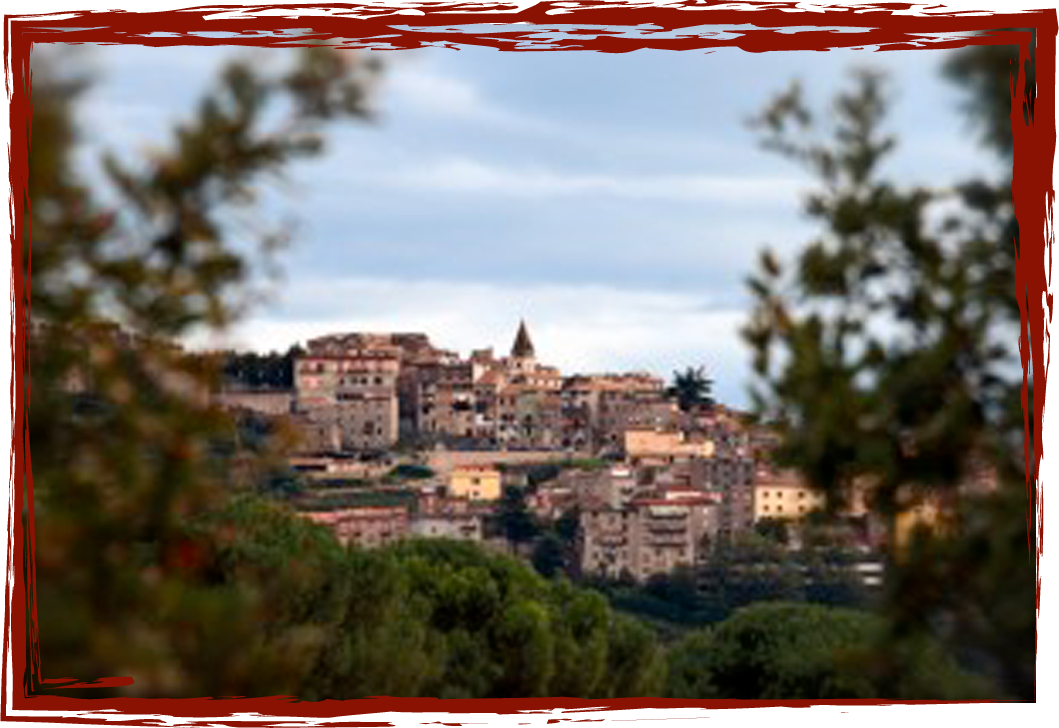
![]()
Maria Matilde was born in Vallecorsa , a small town in the province of Frosinone, to Giovanni and Ottavia De Angelis from Ferentino. Her father, widowed very young from his first marriage, had two sons, Alessandro and Antonio. From his second wife, Vincenza, were born, Carlo Luigi Tommaso, Antonia Lucia, Fedele, Maria Carolina, Carlo Vincenzo, Ottavio Lorenzo, Maria Matilde, Michele Filippo Rocco and Antonio. Of these, Vincenza, Maria Matilde, baptized on the same day of her birth, Michele and Antonio survived.
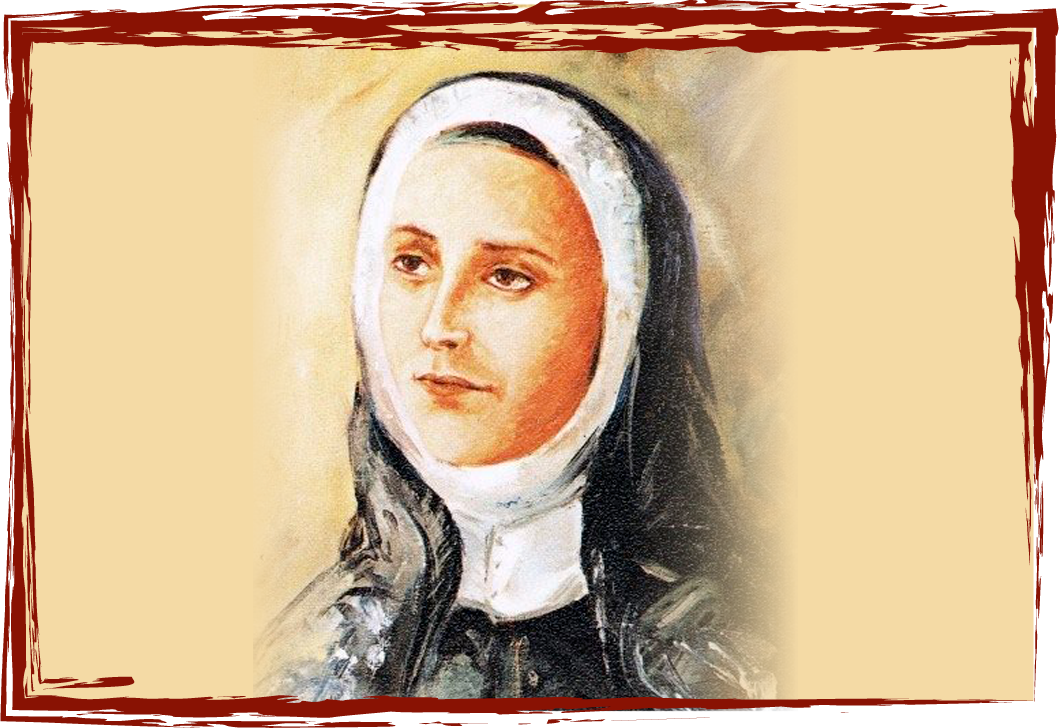
The family, among the more well-to-do of the town, was nurtured by a profound Christian faith. It was among the most regarded families of Vallecorsa. Her father, mayor of the city, is loving and understanding of the vivacity and restlessness of Maria. Guided by her father’s example, she developed a great love for Jesus, the lamb immolated for the salvation of humankind.

![]()
Maria was born in a town sadly know for its brigandage. A town of grey stone situated in the Papal states, bordering the Kingdom of Naples in a very troubled period of history, affected by strong repercussions of the great French Revolution. Maria woman of peace and communion will spend her whole life so that everyone will be reached by the redemption brought about by Christ.

![]()
Maria, illiterate as a girl, but self-taught, becomes a teacher, and a mystical woman. On March 4th in Acuto, at 29 years of age, she founded a religious community of consecrated women centered on the great Paschal Mystery to go through the streets of Italy to make the Love of God known to all. In the span of a few decades her spirituality reaches many areas of Italy and even other countries (Germany and England).
During her life she opened 68 communities. Her daughters will be called to carry to completion their baptismal consecration in the following of Our Lord Jesus in a life of adoration which propels them out to apostolic service in the whole world.

![]()
At Vallecorsa Maria has the first signs of her vocation: the situation of violence and the cruel spilling of blood, helps her understand, in the very soul of the young woman, a comparison between the human blood poured by hatred and vengeance, and that of Christ poured out in love on the cross, Blood which saves because it pardons. After Acuto, on the back of a mule, she goes up and down the mountains traveling miles and miles to be near to everyone.

![]()
Maria moves from one place to the other, speaks and writes to people of all levels, obedient to the voice of the Beloved and of the Church, proposing, (however) a model of an apostolic woman within the Church and publically active in society. She is the lover of Christ Crucified who gives all of his blood. Her own life is the most beautiful result of her assimilation to her Beloved.

![]()
Maria, growing up, feels that the Love of Christ more and more steals her heart. Formed in the school of the Word and of the Crucifix, she goes about firing up other young people with her fervor and puts at the disposition of all her charism of teaching, of the Word, of preaching. She opens schools everywhere, organizes encounters for the youth and for mothers,. She is a tireless catechist and preacher who fascinates the people, an activity not allowed for women in the historic and social context of her times. She dies in Rome August 20, 1866, known for her saintliness. She was beatified by Pope Pius XII in 1950. St. John Paul II cannonized her on May 18, 2003. Her spirit which is all love and charity continues to live on in the Congregation.

![]()
Enamored eyes: with Jesus, crucified love
The Measure: to give your whole life
The foundation: conversion
The style: joy
The goal: eternal joy with god.
YOUTH MINISTRY - ITALIAN REGION
Regions
![]()

Manaus Region
Av. Constantino Nery, 1751
Barrio S. Geraldo
Caixa postal 385
69.050-000 Manaus-Amazonas
https://arquidiocesedemanaus.org.br/2017/12/03/irmas-adoradoras-do-sangue-de-cristo-comemoram-os-70-anos-da-chegada-no-amazonas/
India Region
Aradhana Convent I.I.M. Post. Arakere
560076 Bangalore-KARNATAKA (INDIA)
http://www.adorersindia.com/
Schaan Region
Kloster St. Elisabeth
FL 9494 Schaan (LIECHTENSTEIN)
http://www.kloster.li/index.php?pID=1
Zagreb Region
Tuskanac, 56
10000 Zagreb (CROATIA)
https://www.klanjateljice.hr/
USA Region
4233 Sulphur Avenue
St. Louise, MO 63109 (USA)
http://adorers.org/
Wrocław Region
Adoratorki Krwi Chrystusa
Ul. Szymanowskiego, 25
51-609 Wrocław (POLONIA)
http://www.adoratorki.pl/
Tanzania Region
P.O. Box 3266
Dodoma- Miyuji ( TANZANIA)
http://www.imagenation.it/village-of-hope
Italian Region
Via San Giovanni in Laterano, 73
00184 Roma (Italy)
Dear Neighbor
![]()
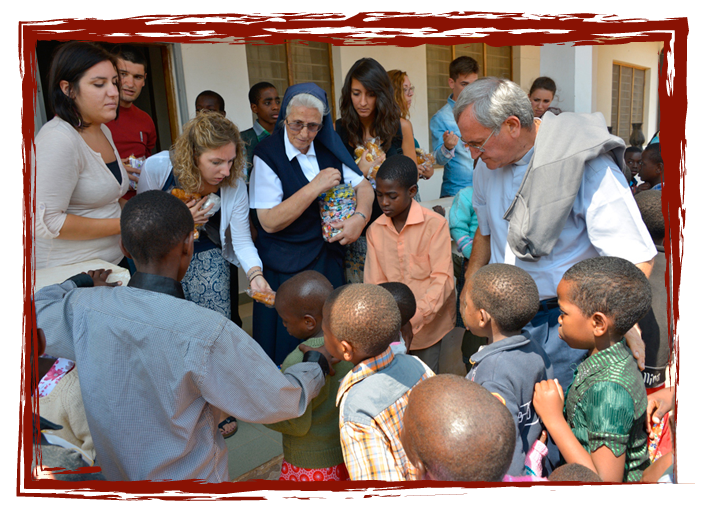 The common mission of the Adorers of the Blood of Christ in the Church consists in collaborating with Christ in His redemptive work by witnessing the love of God and giving it to others, especially the poor, the oppressed, the marginalized, the outcast. Through our varied ministries of evangelization and human promotion, of prayer and our sharing in the cross of Christ, we collaborate day after day in building up of the Body of Christ, so that all creation may advance toward "that beautiful order of things which the great Son of God came to establish with his Blood "( St Maria De Mattias Letter n.16).
The common mission of the Adorers of the Blood of Christ in the Church consists in collaborating with Christ in His redemptive work by witnessing the love of God and giving it to others, especially the poor, the oppressed, the marginalized, the outcast. Through our varied ministries of evangelization and human promotion, of prayer and our sharing in the cross of Christ, we collaborate day after day in building up of the Body of Christ, so that all creation may advance toward "that beautiful order of things which the great Son of God came to establish with his Blood "( St Maria De Mattias Letter n.16).
The Paschal Mystery of Jesus Christ is the place where every Adorer of the Blood of Christ feeds and nourishes her own mission, lived first and foremost in the apostolic community to which she is called by obedience and addressed to every age group, social class, every need, language, people and nation to be "witness" of the universal and personal love of the unique Easter sacrifice of the Crucified-Risen Lord: The style of the mission is rooted in that of Jesus and of his Blessed Mother, Our Lady of Sorrows, "Woman of the New Covenant".
The motto of St. Maria De Mattias: "Every person is worth all the blood of Jesus Christ", guides the vision and the mission of the Adorers of the Blood of Christ even today.![]()
 We serve in joy and simplicity, trusting that the Spirit to sanctify us as we minister to others, identifying ourselves ever more in the likeness of Christ crucified and risen.
We serve in joy and simplicity, trusting that the Spirit to sanctify us as we minister to others, identifying ourselves ever more in the likeness of Christ crucified and risen.
The charisma of the Adorers of the Blood of Christ is what the Spirit has given to St. Maria De Mattias: to contemplate the Love of God, expressed in a paramount way in the shedding of the Blood of Jesus Christ, and to communicate it to every person.
Llike Maria De Mattias, "we are consecrated to the adoring and redeeming love of Jesus Christ, who shed his Blood to free us from sin and reconcile us in love. The spirit of the Congregation will thus be all love and charity, 'charity towards God and our dear neighbor' "
(ASC Constitution, Life Charter 2).
Lifestyle
![]()
Adorers of the Blood of Christ
XXII General Assembly
Members of the General Administration
For the six-year term 2023-2029
During the XXI General Assembly the following were elected:
Sr. Maria Hughes, General Superior
Sr. Wiesława Przybyło, General Councilor
Sr. Patrizia Pasquini, General Councilor
Sr. Danijela Anić, General Councilor
Sr. Florida Malenda, General Councilor
The General Councilors are listed in the order of succession established by vote of the General Assembly, according to Bylaw 75.
The General Assembly authorized the General Superior and Council to choose the General Secretary and General Treasurer.
They are designated:
Sr. Barbara Perali, General Secretary
Sr. Monica Rini, General Treasurer
according to the procedures defined in Bylaw 76.
Church of the Precious Blood
![]()

The Church of the Precious Blood is annexed to the general house of the Adorers of the Blood of Christ.
Dedicated on March 4, 1943, it was renovated in 1964-65. Composed of three naves, in the apse is adorned with a mosaic made by Prof. Augusto Ranocchi of the University of Rome. The mosaic depicts Christ Crucified, at whose feet are Santa Maria De Mattias and San Gaspare del Bufalo. Christ, with the pierced and bleeding side, has his eyes open; the white color of his body refers to the light of the resurrection. In the crucified Jesus the Paschal Mystery of death and life has already fully accomplished and the cosmos that surrounds Him – expressed in the mosaic with the sky, the earth, the sea and the darkness of the underworld - awaits its full revelation.
Maria De Mattias, kneeling at the feet of her Lord, turns her gaze into his gaze in adoration.
In the right side chapel is the bronze urn of Santa Maria De Mattias, made by Giambattista Conti of Rome. The mortal remains of the Foundress of the Adorers of the Blood of Christ rest here since they were moved by the Church annexed to the house of the ASC in Via San Giovanni in Laterano in the year of the beatification (1950).
The Station of the Cross is the work of the artist Angelo Biancini from Faenza, who worked there in 1965-66.
In it, the figure of Christ, in contrast to the other figures, is always presented erected in order to emphasize His majesty.
First and last station of the Cross of the artist Angelo Biancini. Jesus condemned by Pilate and Jesus deposed in the sepulcher.
Chiesa del Preziosissimo Sangue ![]() Largo Pannonia
Largo Pannonia
00183 ROMA
SUMMER SCHEDULE
(JULY-AUGUST-SEPTEMBER)
July 1 Solemnity of the Most Precious Blood
Eucharistic Celebration 9.00 AM
Month of July
Daily Mass at 7, 30 AM
Sunday Mass at 9,00 AM
No Mass on Saturday Evening
Month of August
No daily Mass
Sunday Mass at 9,00 AM
No Mass on Saturday evening
Month of September
Daily Mass at 7,15 AM
Sunday Mass at 9,00 AM
Our History
![]()
The alarming picture of the post-Napoleonic period could not leave the young Roman priest, Gaspar Del Bufalo (1786-1837), indifferent. In his contemplation of God’s love for humanity expressed in Jesus’ bloody sacrifice, Gaspar understood the priceless value of each human person redeemed by His Precious Blood and sees in the power of this Blood the only anchor of salvation from many evils. Finding himself a prisoner in Bologna, he plans two Institutes to this end, one a men’s institute and the other a women’s. Both were to contribute to the reform of society, the first through popular missions and the second through effective Christian and devotional education, working with all their might that this blood not be shed in vain but that each person take advantage of it for his or her salvation.
The women’s Institute begins in Acuto (FR) in the diocese of Anagni, through the work of Maria De Mattias who opened a school for the girls of the people. Later she gathers young people and married women, gives retreats, animates liturgies, promotes women who will be able to reform their families, the first cell of society. In a short time, other companions join her, and open schools in the small towns of the Pontifical State and the Kingdom of Naples. She wrote, “The purpose of this Institute is the same as that of the Blood of Christ.”
His holiness Pius IX grants the “decree of praise” after having learned of the Institute from the testimonial letters of the Bishops in whose dioceses the Adorers zealously dedicated themselves to the Christian and civic education of the poor girls. 
Printing of the first Rule of the Adorers
The Sisters of Perpetual Adoration of the Precious Blood, founded in Steinerberg (Switzerland) and transferred to Gurtweil (Germany), join the Institute of the Adorers of Acuto, adopting its Rule and habit. 
Maria De Mattias dies in Rome of tuberculosis at the age of 61. At that time, there were more than 200 Sisters in the Institute. Sixty-four schools had been opened, one of which was in London (1863 -1879). 
The first group of German-speaking Sisters go to the USA following the kulturkampf in Germany and accept a school for children of German immigrants in Piopolis, Illinois
The Adorers of the Most Precious Blood are recognized as a pontifical Institute.
Another group of German Sisters goes to Banjaluka in Bosnia to open orphanages and schools.

Pope Leo XII definitively approves the Constitutions.
The Congregation is divided into religious provinces.
The Congregation of Religious approves the Constitutions revised on the basis of the Code of Canon Law.

Pope Pius XII beatifies Maria De Mattias, the Foundress of the Institute.
The Sisters Perpetual Adorers of the Sacred Heart of Jesus in Orvieto (TR) of the St. Paul Institute join the Adorers of the Most Precious Blood on their own accord.
A special General Chapter was held for the revision of the Constitution required by Vatican Council II. This chapter is prepared by an international commission, which involved all the Sisters of the Congregation. The principles emphasized by the Council in religious life were applied. “Return to our sources” was facilitated by the coinciding of the centennial of the death of the Foundress and discovery of many documents from the beginnings of the Institute in the Anagni diocesan archives.
The title of the Institute is changed from Sisters of the Most Precious Blood (Ad.PP.S.) to Sisters Adorers of the Blood of Christ (ASC).
150th anniversary of foundation.
This celebration, preceded by three years of preparation with in-depth study of the themes of adoration-mission, contributes to the development of the charism of the Congregation and the spirituality of the Precious Blood
Definitive approval of the Constitution by the Congregation for Religious, after a twelve-year experimentation and an updated revision with the involvement of all the members of the Congregation
Five Adorers of the Blood of Christ from the USA, missionaries in Liberia (Africa), are killed during the civil war. The Pope called them “Martyrs of charity.”
The three American provinces joined in a single United States Region. The headquarters of the US ASC administration is in St. Louis-Missouri
The four Italian provinces also made the same choice by merging into a single Italian Region. The seat of the regional administration is the house of S. Giovanni in Laterano, in Rome![]()
In response to the calls of the Church, the Institute was open to missions abroad:

The Adorers of the Ruma, Illinois Province (USA) leave for Shntung, CHINA. They work there for 13 years, two of which were in a concentration camp because of WWII. They return home safe and sound on January 31, 1946. 
The Adorers of the Schaan Province (Liechtenstein) leave for Altamira, Xingù (BRAZIL), assisted by the Adorers of the Wichita, Kansas Province (USA) in 1947. Currently it is a flourishing province of Brazilian Adorers with their central headquarters in Manaus, Amazonia. 
The Adorers of the Cagli Province (PS), today Florence, leave for Lushnia, ALBANIA. Following WWII, after many vicissitudes they return home on March 12, 1946. In 1991, the Adorers of the Bari Province return to that land and are still working there for the promotion of local youth. 
The Adorers of the Province of Rome leave for the BELGIAN CONGO. The mission develops, but after ten years, when the Congo obtains its independence, the Simba begin persecutions, torture and harassment. The Sisters were miraculously saved and return home on Christmas Eve 1964. 

The Adorers of the Ruma, Illinois (USA) Province leave for PUERTO RICO. Assisted by lay people they open a school in Rio Piedras, animate the liturgy, prepare people for the sacraments and promote the local youth. 

The Adorers of the Province of Zagreb leave for AUSTRALIA, with the purpose of assisting Croatian co-nationals who had emigrated in grand numbers after the shambles of WWII. 

The Adorers of the Province of Bari leave for ARGENTINA. They settle in the outskirts of Buenos Aires, Villa Bosche where there are many Italian immigrants. Currently there are eight sisters. They work in 3 communities in the educational field and providing physical and spiritual assistance to the poor of the favelas.
The Adorers of the Wichita, Kansas (USA) Province open a mission in Santiago Atitlan, GUATEMALA. For political reasons this mission is closed. The ASCs establish themselves in GUATAMALA CITY.

The Adorers of the Province of Acuto (FR) open a mission in Manyoni, TANZANIA. The community is growing quickly with indigenous Adorers. They are working in 5 locales.
The first five girls from Kerala, INDIA, arrive in Italy for their formation with the aim of returning home as soon as possible. The Province of Florence is responsible for them. In 1978 they return to India. They work in schools and for the promotion of women and in healthcare. 

The Adorers of the Province of Ruma, Illinois begin a mission in Grad Cess, LIBERIA. The mission develops until the political situation becomes critical. The Sisters were called back to the USA. They return in 1991, and in October 1992, 5 ASCs are killed during the civil war. 

The Adorers of the Province of Ruma, Illinois open a mission in La Paz, BOLIVIA, dedicating themselves to pastoral ministry, especially with the Aymara Indians. Later the Spanish Adorers form a community in Tarija, Bolivia, and accept the “Moises Navajas” orphanage. Young Bolivians are increasing the community. At the present time the Bolivia Foundation is part of US Region.

The Adorers of Wichita, Kansas (USA) open a mission in SOUTH KOREA. Currently two communities of indigenous Sisters minister there. At the moment the Korean foundation has taken on the formation of young Vietnamese ASC candidates.

The Adorers of the Province of Rome open a mission in GUINEA BISSAU, Africa. Three communities minister there, enriched by indigenous Sisters. 

The sisters of Bari province started the Foundation in the Philippines. Today the Foundation is composed of 8 adorers of whom 7 are Filipina nuns of perpetual vows. They work in three apostolic communities: Quezon City, Marikina and Maasin (Leyte).
The Adorers of the Province of Wrocław, Poland, open a mission in the UKRAINE. 
The Adorers of the Province of Wroclaw (Poland) open in Russia - SIBERIA, originally in the City of Krasnoyarsk and then they move 120 Km to West in Aczynsk. The missionary sisters are ministering to the human and spiritual formation of women and children.
The Adorers of Schaan (Liechtenstein) Region open a community in Russia - SIBERIA in Slavgorod City but was closed in 2015.
The Adorers of Poland open the mission to Dokshycy in Belarus
India became a delegation and in 2005 Region. Today it has 81 members divided into 15 communities, 2 of them are in Italy.
The Manaus region opens the ASC community in Lima, Perù.
Tanzania becomes a region: today it has 83 local members divided into 9 apostolic communities, one in Cesena (Italy) and a missionary community in Mozambique (Mafuiane).
Two Adorers return to Liberia 25 years after the death of the five charity martyrs in that country.
Currently the Congregation has 1,137 members: 1,092 perpetually professed and 45 with temporary vows.
